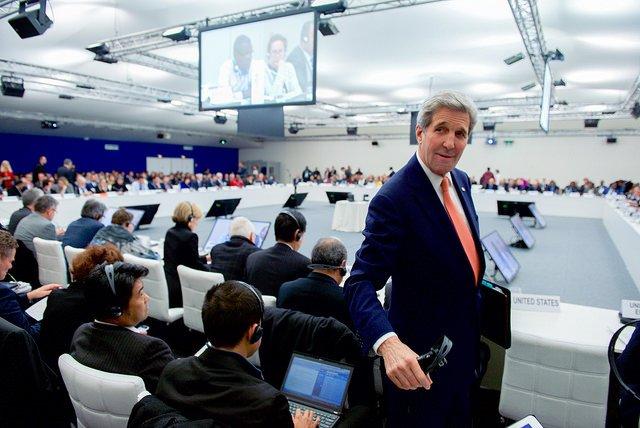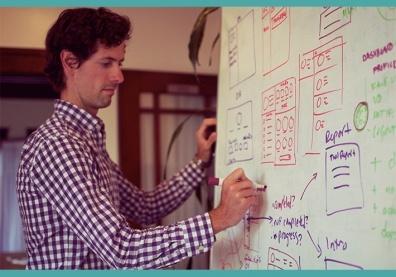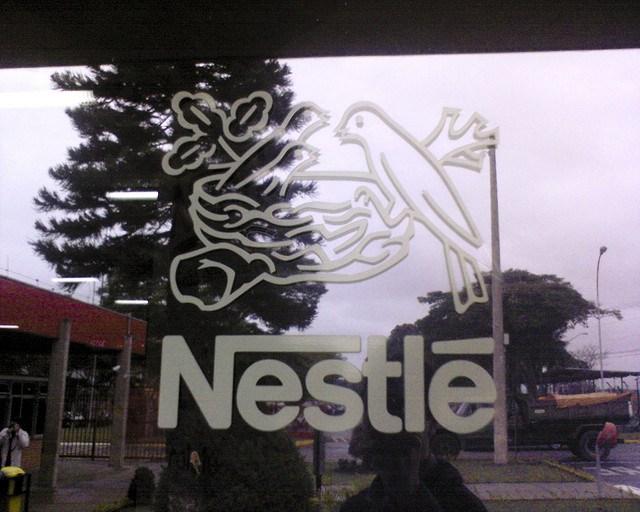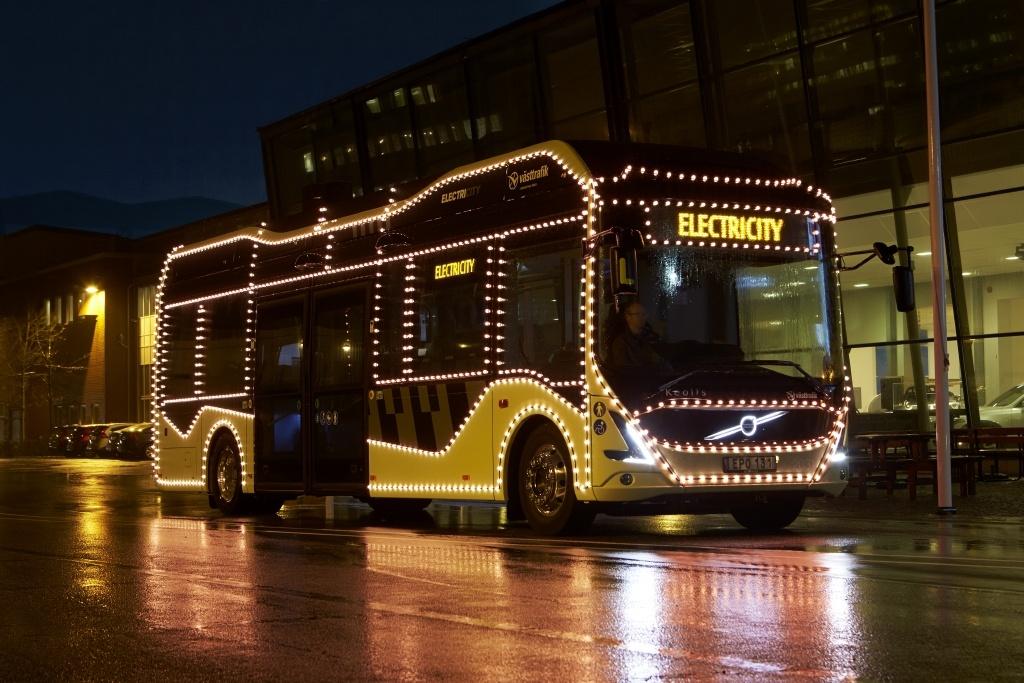COP21: Grand Success or Major Disappointment?


National leaders across the world have praised the climate agreement signed in Paris on Dec. 12. President Barack Obama called it “a turning point for the world.”
Indeed, when compared with the previous 20 U.N. COP meetings that all came up short of a meaningful agreement, this has to be seen as a success. But then, with the years that have passed since the first COP meeting in 1995, the level of urgency has grown exponentially. Had we taken action then, the task would be far easier now.
Given the very wide disparity of positions -- with countries like India and China insisting that fossil fuels are essential to bring their people out of poverty, while island nations clamored for action that could mean the difference between life and death -- some degree of compromise was inevitable. Indeed the question that hung in the air through the two-week conference was: How much could reasonably be expected?
While the U.S. did play a meaningful role that we can take some satisfaction in, one can’t help but wonder if we might have done even more, had the Republican opposition not taken such an extreme position.
Bill McKibben, co-founder of 350.org said, "This didn't save the planet, but it may have saved the chance of saving the planet."
It brings to mind a baseball analogy. Picture the home team coming from behind, in the bottom of the ninth — not to win the game, but to tie it, sending it into extra innings and keeping hope alive.
Climate crusader James Hansen, who was among the first to sound the alarm, was less pleased with the level of compromise, calling the outcome a “fraud.” He called the agreement, “just worthless words. There is no action, just promises. As long as fossil fuels appear to be the cheapest fuels out there, they will be continued to be burned.”
Indeed, it seemed that the idea of a carbon tax, which many, including Hansen, had called essential in the lead-up to the conference, was swept aside in the rush to come up with some kind of agreement before the clock ran out.
It should not have been a surprise. U.N. climate chief, Christina Figueres, said of the possibility, back in October at an investor event in London, “I agree it would be more simple ... but it’s not quite what we will have.”
Still, Hansen, who has been concerned about this longer than anyone, calls the 2-degree target “highly dangerous,” and insists that only a carbon tax, or fee, as he prefers to call it, will prove sufficient to the task, given the urgency.
Secretary of State John Kerry had the following response to Hansen’s comments. “… With all due respect to him, I understand the criticisms of the agreement because it doesn’t have a mandatory scheme and it doesn’t have a compliance enforcement mechanism. That’s true. But we have 186 countries, for the first time in history, all submitting independent plans that they have laid down, which are real, for reducing emissions."
I tend to agree with Kerry. I believe we have reached a tipping point. I think the number of actions that have already taken place, the number of companies, countries, cities and investors that have already committed, and the amount of innovation coming out every single day is going to bring far more change than people expect. People will choose to take action because they will understand that it will be in their own best interest, and they will see how easy and affordable it will be to do so. Of course, there will be laggards. American Republicans may well be the last in the world to take action, but in the end, even they will have no choice.
It’s true that there is no such thing as too soon from a climate perspective. If we were to entirely outlaw the use of all fossil fuels today, that would yield the best outcome for the climate. Of course, that is totally unrealistic. A transition is required. People talk about how many miles it takes to turn an oil tanker around. What we are talking about here is not an oil tanker; it’s the entire world economy. How quickly can we turn that around?
That is what we will find out from this day forward and for the rest of this century.
Image credit: IIP Photo Archive: Flickr Creative Commons
A Pricing Alternative To COP21


As an economist, I have a jaundice view of the COP21 agreement in which the world’s nations agreed to reduce climate changing pollution. My skepticism ties to a lack of price signals included in the agreement. My question is: Can the world can realize a green economic revolution that delivers less pollution plus economic growth without including the cost of pollution at the cash register, meter and pump?
Pricing vs. regulation
Regulation is the public policy alternative to reflecting externality costs in the price of goods and services. Regulation has proven its ability to enhance the welfare of people and the planet. Our cars are safer, with fewer Americans being annually killed or injured from auto accidents, due to automobile safety regulations mandating seat belts and air bags. Regulation of our country’s new car fleet mileage has significantly limited gasoline demand, and this slowing of demand is a significant reason why gasoline prices are lower. Our cities do not have Beijing’s horrific smog crisis because of our air emission regulations.
However, the price of regulation is consumer disenfranchisement from the decision-making process. Consumers often view regulation as an intrusion by big government. With regulation comes complex rules that most consumers do not have the time or interest in understanding. The result is the questioning of regulation's efficiency and benefits by consumers and voters.
Most critically, regulation does not achieve consumer buy-in because consumers do not “own” the procurement decisions being made for them by government. Rather than being given pricing signals that allow consumers to evaluate more harmful products against less harmful products, the consumer is disenfranchised by regulations that mandate their decision. Using regulation rather than price signals to influence consumer procurement can generate consumer mistrust of business and government.
Why businesses favor price signals vs regulation
The pricing of externality costs is not without politics or special interest lobbying. The question is whether politically arguing over regulation, or politically arguing over the price to assign a product for its externality costs, creates more value. From my business experience, you sell the sizzle but you close a sale on the numbers. Encouragingly, the “sizzle” of buying products that mean more in terms of human and environmental benefits is gaining consumer appeal. To convert this sizzle into mass-market consumption levels requires putting the cost of pollution into the price of a product so consumers can see that the less polluting product has the lower price.
This is a reason why companies like BP, clean-tech innovators like Elon Musk and consumer product companies like Unilever all call for the price of goods and services to include a cost for carbon pollution. Today, selling less polluting goods and services faces a huge competitive disadvantage when goods and services with higher levels of pollution also have a lower price because the cost of their pollution is not reflected at the cash register, pump or meter. Companies with less polluting fuels, cars or soaps are at competitive disadvantage when their externality benefits are not price obvious when consumers are price comparison shopping.
Disastrous consequences are the result (like climate change or an obesity epidemic) from consumers not buying the goods or services that are best for their health, the environment and our economy because more polluting or fattening products have a lower price.
A pricing alternative to COP21
Pricing pollution is the economic alternative to COP21. China, California, Mexico, Quebec and British Columbia, the European Union, and South Korea all have a form of carbon pricing. This is a basis for the largest percentage of the world’s economy to implement a unified carbon-pricing policy.
Economists are famous for using assumptions to remove an elephant in the room that retards their economic argument. I admit to doing so with this proposal. The political leadership of states that benefit from a carbon-intense economy would not support carbon pricing.
But the time may be on us where carbon-intense economic development has hit its growth wall. If a political consensus develops that ties job and economic growth to low-carbon innovation, then the door will open for the pricing of emissions to generate jobs and economic development.
Imagine the potential for economic growth, job creation and human health if the U.S., along with China and the European Union, agreed to a common pollution tax on all the products sold in their countries. Products that polluted more would costs more. Products that polluted less would cost less. With these three economic giants having a uniform and unified carbon price, no economic gains would be created or loss between these respective countries. No nation wishing to sell goods and services in these countries could ignore or discount their pollution to gain price-competitive advantage for their imports.
This single pricing step by the three economies that define more than 60 percent of the world’s annual gross domestic production would convey sales advantage to goods and services that pollute less and sales disadvantage to goods and services that pollute more. This would drive the world’s business community to massively re-gear around technology innovations that deliver price competitive, less polluting products. Consumer decision-making would shift as they see at the pump, meter and cash register the real price of products, including their pollution costs. The world, and the U.S., would be on an accelerated path toward a $250 trillion green economic revolution -- delivering more jobs, less pollution and a growing economy.
Image credit: Flickr/tales of a wandering youkai
The Who’s Who in the Low-Carbon Economy


The COP21 talks in Paris have resulted in a historic agreement, and of course, the hard work begins now. Yes, many are protesting that it is far too weak, and convincing 195 national legislatures to approve the agreement faces an uphill climb. Nevertheless, this climate agreement is a signal that the global economy will undergo a massive shift toward what many describe as a low-carbon economy.
In addition, a new report issued by CDP and the Climate Group reveals that many companies and governments are already moving in that direction and are preparing for a future with more renewables and less greenhouse gas emissions.
According to this latest survey, at least 200 corporations, states, regions and cities have established plans to either procure 100 percent of their power from renewable sources, or are determined to reduce their greenhouse gas emissions anywhere from 80 to 100 percent.
Many of the companies that have set reduction targets in greenhouse gas emissions have been working on such goals for several years. Google, U.K. retailer Marks and Spencer, department store chain Kohl’s and Microsoft insist they have already met those goals last year. Mars Inc., Tesco and GlaxoSmithKline have also set zero-GHG commitments, but say that they will reach those goals mid-century. (Companies that made this list by purchasing REC certificates or carbon offsets are included in this survey.)
Microsoft, Goldman Sachs and Infosys are among the companies that are complementing their greenhouse gas emission goals with renewable energy targets. Most corporations noted within this list (Ikea, Lego, Swiss Re and Nike, for example) say they plan to meet these targets within a decade. Other companies noted by the survey, including Starbucks, Walmart and P&G, will score the proverbial eye-roll from many who read the report, as these firms have disclosed that they will go 100 percent clean energy — but have not yet set a target year.
As for the governments, worldwide the vast majority of states, regions and cities making the low-carbon grade are in the European Union and North America. The Asia-Pacific has a token presence, with most jurisdictions within in Japan (including Fukushima prefecture). For some local officials, this list will look familiar -- many local governments listed in this survey have long been planning to cope with climate change. And here in the U.S., while many local governments committed to renewables or GHG reductions are concentrated on either coast -- as in, Seattle, New York, San Jose and Santa Monica -- plenty of cities in “red states” made the grade as well.
The Climate Group and CDP insist this current list is in no way exhaustive. Companies that made the roster either responded to CDP’s 2015 climate change survey, have participated in the American Business Act on Climate Change or are taking part in the RE100 Initiative. Governments were vetted based on several surveys, including the Climate Group’s periodical reports.
Whether or not national governments become more proactive or retreat from these new climate commitments due to political expediency, watch for this list of companies and governments to grow in the next few years. As more citizens voice their concerns about climate change, and companies realize a focus on sustainability is vital to their long-term success, fewer leaders will want to be omitted from this important conversation our society is having — whether or not the COP21 agreement is a success or failure in the long run.
Image credit: Wiki Commons (XAtsukek)
Developing Countries Targeted By Tobacco Marketing


By Anum Yoon
If you run a gigantic, multinational corporation that sells poison, what do you do when you wear out your welcome in the world’s developed countries?
One option is to cut your losses and find a new product to sell. But that’s not the path being chosen by the tobacco industry. Now that the American people have caught on to the whole “smoking kills people” thing, these firms are pulling up roots and targeting poorer, less developed countries instead, trying to start the whole cycle over again.
Let’s take a look at what’s going on, and the implications it has not just on public health, but on the environment itself.
What’s going on?
A recent study published by the World Health Organization indicated that tobacco marketing has spread like wildfire across 16 countries and a whopping 462 individual communities. But apart from the numbers, the study also indicated something else: “People living in poor countries are exposed to more intense and aggressive tobacco marketing than those living in affluent countries.”
There's little doubt as to why developing countries are targeted by tobacco marketing.
In the United States, just to name one such “affluent country,” our economic wealth, and the availability of basic education, has elevated into the public consciousness a keen awareness of smoking’s battery of negative effects. Poorer countries are made prime targets for Big Tobacco’s predatory practices because of their general lack of quality education, and in some cases, the absence of an assertive central government.
The popularity of tobacco reached its peak in America back in 1982; in that year alone, we bought a total of 624 billion cigarettes. From there on out, the U.S. government has been in a long and painful battle of attrition, the ultimate goal of which is to disentangle ourselves entirely from the tobacco industry and the damage it inflicts simply by existing.
Unfortunately, it’s now come time for the populations of poorer countries to have a reckoning with the long arm of Big Tobacco. The countries most aggressively being targeted by advertising include India, Pakistan and Zimbabwe, where tobacco marketing is 81 times as common as it is in Canada, Sweden and the United Arab Emirates.
The effects of tobacco marketing
All of that is pretty startling on its own, but what we’re missing so far is a better understanding of just how effective tobacco marketing is. Sure, Big Tobacco might be pouring money into these countries in the form of aggressive advertisements, but does it work?
The answer, unfortunately, is yes. The accumulated evidence seems to suggest that tobacco marketing does tend to drive increases in the use of tobacco, particularly among the world’s young people. And consider this: In the years before the Soviet Union opened its doors, and its lungs, to the sale of tobacco products, extraordinarily few Russian women smoked. But within 10 years of Big Tobacco gaining a foothold there, the rate of smoking among females had fully doubled.
How smoking impacts the environment
Neither you nor I should doubt by now that tobacco use is linked to dozens of significant health problems. The research, tirelessly compiled over many decades, has confirmed this many times over, and the latest figures indicate that roughly half of the world’s population of smokers will eventually die as a result of health complications brought on by smoking.
But even that terrible statistic doesn’t give us a complete picture of the damage wrought by Big Tobacco. It turns out that there can be significant environmental impacts as well.
The WHO estimates that about 200,000 hectares of woodlands and forests are destroyed each year to make way for tobacco farming. Studies as far back as 1999 indicated that almost 5 percent of global deforestation can be attributed to the cultivation of tobacco.
And like most other kinds of farming, the tobacco plant itself has a tendency to leach important nutrients from the surrounding soil, making it unsuitable for growing food crops, and the widespread use of aggressive pesticides and fertilizers has been linked to severe health problems when farmers aren’t properly trained in their use — a situation much more likely in the world’s developing countries.
Finally, tobacco products have been linked to an incredible amount of manufacturing and chemical waste: 2.3 billion kilograms of the former and 209 million kilograms of the latter, according to 1995 numbers. And that’s to say nothing of cigarette butts — a very common variety of litter — which aren’t biodegradable.
It’s time to take a stand
In 2003, the World Health Assembly adopted the Framework Convention on Tobacco Control (FCTC), which provided evidence-based measures to control the proliferation of tobacco marketing and sales in participating countries; 180 nations signed the treaty.
And yet, more than 10 years later, the FCTC’s tobacco marketing bans are still one of the least-adopted measures featured in the treaty. The developed world could do much more than it is, whether it’s imposing sanctions on countries that deny there’s a problem, or pledging economic assistance to countries that take a stand against Big Tobacco. Nearly anything is better than our current strategy, which is, more-or-less, doing nothing at all.
Image credit: LibreShot
Anum Yoon is a writer who is passionate about personal finance and sustainability. She often looks for ways she can incorporate money management with environmental awareness. You can read her updates on Current on Currency.
How We Created Our Core Values (and You Can Too)


By Phil Clark
Creating your core values is one of the most important, and most overlooked, practices in business. In particular, core values are important because they guide decision-making and help you clarify, articulate and enhance your employee culture. Core values are especially critical for growing companies because they provide a common framework (or decision-making lens) that can help employees respond to new opportunities and challenges in a way that is more consistent with your company’s overall mission.
I have found that there are three broad categories of how companies approach their core values:
1. Informal. Many businesses do not have a defined set of core values at all. These companies may have strong beliefs and values -- it’s just that they are not written down. If this is you, don’t worry. We were in the same boat up until the summer of 2015.
2. Superficial. If you have core values, do they actually mean anything? For example, the core values of “communication,” “respect,” “integrity” and “excellence” sound pretty good. The problem is that these were Enron’s values. Enron was caught in a massive accounting scandal and self-imploded -- causing the largest bankruptcy in American history at the time.
3. Resonant. When your core values resonate with your employees and your company’s larger purpose, they become useful tools to help guide decision-making. Resonant core values are everyday tools that support your company’s larger purpose.
How we did it at Exygy
Here are the steps we took at Exygy to create and define our core values:Get the whole team together. Give everyone post-it notes and allow them to write out words that express their core values. Don’t edit at this stage -- go for volume.
Organize into groups. Start to group the words into general topics and edit them down based on importance. Over time, you will find that the most resonant values will rise to the top. We were able to determine what really mattered to us the most.
Take the time necessary to do it right. Creating your core values the right way may take a long time. We had a group of people meeting once per week for several months to clarify and articulate our core values. I recommend putting core values up on the wall and testing them out for a period of time before making a final decision. If a prospective core value doesn’t resonate a few weeks later, feel free to iterate on it based on feedback from your team.
Be aware of how different people learn
For core values to be resonant and enduring, the process of arriving at those core values has to intersect with how people learn. For example, some people learn by analyzing, some people learn from watching, and others learn from doing.If you are an analyzer, you are going to be asking a lot of questions and processing out loud. Facilitators should recognize this type of learning style and be happy to answer as many questions as needed.
If you learn from observation, you might have to see the core values modeled in practice. Role playing in a group is a great way to help the observer feel more comfortable and confident.
For the doer, an intellectual discussion about core values isn’t enough. It’s critical for people with this learning style to get out there and test the core values in the real world. They then enjoy learning from any mistakes, iterating on the core value, and trying it out again.
Tips on creating your core values
Finally, here are some tips to help you maximize your chances of success:Don’t just write the word. It’s extremely helpful to list actions, habits, and behaviors that show this core value in practice. Put up posters on the wall with the idea that people would record the way people live and enact the core values. These actions and habits are critical for everyone to see.
Recognize and reinforce your core values. If you want your core values to stick around, make it a practice to recognize folks who are doing a great job. One way to test this is you feel very excited when you see someone modeling a core value. If you aren’t excited, then you might have the wrong core values.
Tweak the wording as necessary. If done right, core values have an element of timelessness. However, it’s important to balance this characteristic with recognizing change. Things will inevitable change in your company. Keep working with your team to update, tweak, and refine your core values as necessary.
Image credit: ExygyPhil Clark is Chief Creative Officer at Exygy--a digital agency and Certified B Corporation based in San Francisco. Phil leads Exygy's product design and helps direct the overall strategy, vision, and operations of the company. You can write him at [email protected] or follow him on Twitter: @philipwc
Top 10 Renewable Energy Producing States


World leaders convened in Paris last week to agree on a successor to the Kyoto Protocol. The goal is to keep global temperature rise to 2 degrees Celsius, at maximum, with many stakeholders calling for an even stronger goal of 1.5 degrees. One way to achieve that goal is through the mass deployment of renewable energy.
A recent report by the International Renewable Energy Agency (IRENA) found that achieving a 36 percent share of renewable energy by 2030 would provide half of the greenhouse gas emissions reductions needed to stay within the 2-degrees threshold.
The U.S. has a chance to be a leader in renewable energy deployment given its sheer size and resources. And some states are leading the way. Olivet Nazarene University’s engineering department ranked the top 10 green states in terms of renewable energy.
How does your state stack up? Did it make the list? Read on to find out.
1. Maine
The state makes the top spot because it is able to produce more wind energy than all of New England combined. The state has over 200 turbines that are constructed and under contract, with a total investment in Maine-based projects of over $1 billion. In 2013, Maine’s wind turbines generated 431 megawatts (MW) of capacity, enough to power about 61,000 homes for a year.
Maine wind farms will reduce carbon emissions by 2.5 million tons in 2020, equal to removing pollution from 400,000 cars. That same year, the state’s wind power output is expected to reach 1,700 MW of capacity, enough to power 276,000 homes for a year.
2. Rhode Island
The growing solar sector in Rhode Island helps put it in the second spot. In 2013, its solar sector increased by 62 percent. The state is the second-lowest emitter of carbon among all states, and doesn’t have any coal-fired electricity generation.
Although less than 4 percent of Rhode Island’s net electricity generation comes from renewable energy, most of it from landfill gas, it is really growing. The state has a renewable energy standard (RES) requiring electricity providers to get 16 percent of power sold in the state from renewable sources by 2019.
3. Idaho
The northwestern state’s main renewable energy source is hydropower, but it has sufficient geothermal sources for electricity production. In 2014, a whopping 82 percent of Idaho’s net electricity generation came from renewable energy sources, and it has the fifth lowest average electricity prices in the U.S. Hydropower supplied 60 percent of net electricity generation in 2014, making Idaho the second largest hydropower user, after Washington state.4. Delaware
Although in 2014 Delaware generated 82 percent of its electricity from natural gas and 11 percent from coal, it has a renewable portfolio standard requiring electricity suppliers to generate 25 percent of electricity from renewable energy sources by 2026.5. Hawaii
Hawaii’s main source of renewable energy is biomass, followed by solar and wind. However, it has geothermal capacity. It is one of seven states with installed geothermal capacity, and in 2014, 19 percent of its renewable net electricity generation came from geothermal energy.
Its utility-scale electricity generation from solar energy more than doubled in 2014. It is also the first state to set a goal of producing 100 percent of its electricity from renewable energy sources, a goal it plans to reach by 2045.
6. Oregon
In 2014, 73 percent of the state’s generated electricity was from hydroelectric plants and other renewable sources. Its geothermal potential is ranked third in the U.S. after Nevada and California.
7. Nevada
Although 90 percent of the state’s energy is imported, it is ranked second in the U.S. for geothermal energy potential. It was ranked second in the U.S. in utility-scale net electricity generation from geothermal energy and third in utility-scale net generation from solar energy in 2014.
8. South Dakota
The state has vast wind power potential as 88 percent of its land area is suitable for the development of wind power. South Dakota had more net electricity generation from hydroelectric power than any other source in 2013.
9. Washington
The northwestern state is the nation’s hydroelectric leader, producing 30 percent of America’s hydropower. It is home to the Grand Coulee Dam on the Columbia River, the largest single producer of hydroelectric power in the country. In 2014, Washington ranked 10th in the U.S. in net generation of electricity from wind energy.
10. Iowa
In 2013, 27 percent of the state’s energy came from wind power, and it was ranked third in the production of non-hydroelectric renewable energy. Wind in 2013 was second to coal as a source for electricity generation. Iowa is second, after Texas, in electricity generation from wind turbines.
Image credit: Flickr/steve p2008
Slavery Found Within Nestle's Seafood Supply Chain ... Now What?


By Marianne Smallwood
As consumers, we are well familiar with nasty headlines decrying corporate scandals: Ikea using forced prison labor to make furniture; Patagonia sourcing wool from animal-cruel ranches; Volkswagen deliberately cheating U.S. diesel emissions tests. And this week's egregious corporate crime: Nestle's seafood supply chains use trafficked and child laborers.
After commissioning an independent study with nonprofit Verite, Swiss multinational Nestle S.A. announced that Verite had found indicators of forced labor, trafficking and child labor within Nestle's seafood value chain in Thailand. The $140 billion global seafood industry is no stranger to controversy and has come under intense scrutiny in the past year, with numerous news outlets highlighting the industry's abuses in human trafficking and slave labor. In Thailand alone, the country's fishing industry faces an annual approximate shortage of 50,000 sailors, a gap typically filled by Cambodian and Myanmar migrants whose poverty and unregistered status leave them especially vulnerable to traffickers.
Verite lauded Nestle for its initiative in undertaking the study and revealing its findings, and the company has quickly committed to eliminating forced labor in its Thai supply chains and has urged others to do the same. Given that the spotlight still hovers on the seafood industry and Nestle, that reaction is expected. But what happens once media attention shifts, as it always does, to a different industry and corporate culprit?
How a company internalizes this responsibility and who leads its vision for change is a significant factor in determining the longevity of the company's sustainability strategy. One notable success story is that of outdoor clothing company Patagonia. Founder, rock climber and environmentalist Yvon Chouinard engrained into the company the value of sourcing products using fair labor and paying living wages. The company has an internal Social and Environmental Responsibility team and works with reputable external auditors who monitor Patagonia's overseas facilities and supply chain.
The costs from sourcing fair trade supplies, paying fair wages and training its production workers are reflected in higher retail prices for Patagonia's products. Despite these higher prices, the company's target and loyal consumer base is willing to pay a premium for the quality behind the brand. Patagonia's permanent integration of responsible business as core to its company ethos and operations has made it the gold standard for corporate responsibility. If Nestle internalizes the results from the Verite study and can successfully integrate traceability measures and associated costs into prices that consumers accept, it will succeed in some measure.
External factors such as time and politics, however, can impact the progress of a company's well-intended commitments; the global palm oil industry is a prime example of this. Palm oil is an ingredient found in 50 percent of all supermarket products and is a critical export for Indonesia, the world's largest palm oil producer. In September 2014, several global palm oil giants (including Minnesota-based Cargill) signed the Indonesian Palm Oil Pledge, or IPOP, following intense global pressure from consumers and environmental groups to improve their practices within an industry that drives deforestation.
One year later, and at the behest of a new Indonesian government, a second group and agreement has been established to alter and replace the deforestation commitments made under IPOP. Previous pledges made by the IPOP company signatories to preserve forests are now in conflict with new land concessions proposed by the Indonesian government, a situation that has proved contentious and remains unresolved. Particularly in Southeast Asia, the unpredictable dynamics of government can halt even the best laid plans.
Like the garment and palm oil industries, the seafood value chain of which Nestle is a part includes national and local governments and an immense network of individual farms, boats, boat captains, brokers and other intermediaries. Many of these smaller parties operate using casual and informal contracts or agreements. The complicated nature does not excuse the human rights abuses, nor does it give Nestle and other companies a reason to claim ignorance. It does attest to the difficulty in ensuring a completely sustainable, accountable and abuse-free supply chain.
No matter how big the multinational or beloved the brand, a company's value can plummet when scandal breaks. Volkswagen is testament to that. In initiating the public examination of its flaws, and in working with an organization like Verite, Nestle has already gone a more honorable and transparent route than other companies have done. But while it has taken the first step toward being a more responsible company, Nestle's commitment to funding a long-term strategy -- and how it pushes beyond the inevitable roadblocks ahead -- will determine its ultimate footprint and legacy.
Image credit: Flickr/Pedro Angelini
Marianne Smallwood is a diplomat for the U.S. Agency for International Development and freelance writer based in Bangkok, Thailand. She focuses on international affairs, poverty, social impact, and sustainability. She is a graduate of The University of Minnesota and earned her master’s degree from The Fletcher School of Law and Diplomacy at Tufts University. Marianne tweets at @marianne_is and writes on her blog The Outsidist.
Halting Deforestation Plays a Huge Role in Reducing Carbon Emissions


For two weeks, world leaders met in Paris to agree on a successor to the Kyoto Protocol. Reducing deforestation is one key way to reduce carbon emissions. Over 60 heads of state put an emphasis on forest conservation at COP21, the New York Times reports. And that is important as forests cover 31 percent of the earth’s land area, providing oxygen and absorbing carbon. However, some of the world’s forests are threatened. About 46,000 to 58,000 square miles of forest are lost every year. That is equivalent to 36 football fields being lost every minute.
Deforestation is also the second largest source of carbon emissions. Cutting carbon emissions from deforestation in half by 2020 could get us closer to the 2-degree Celsius increase in global temperature rise that experts set as the threshold, a recent study published in the journal Nature Geoscience found.
“Achieving the target will therefore be challenging, even though it is in the self-interest of the international community,” the study's authors state. An economic development shift is required to go from cutting down tropical forests to conserving them. A shift away from “dependence on natural resource depletion toward recognition of the dependence of human societies on the natural capital that tropical forests represent, and the goods and services they provide” is also needed, according to the report.
If nothing is done, tropical forest deforestation will only get worse. A tropical forest area the size of India will be deforested in the next 35 years without carbon pricing, a study that came out in the spring warned. If that occurs, it will create over a sixth of the remaining carbon that can be emitted if we are to keep global temperature rise below the 2-degrees threshold.
Researchers looked at the future of tropical deforestation from 2016 to 2050 with and without carbon-pricing policies. They based their predictions on 18 million observations of historical forest loss in 101 tropical countries. If there are no new forest conservation policies, 289 million hectares of tropical forest will be cleared from 2016 to 2050, an area that is over 14 percent of earth’s tropical forests in 2000 and about the size of India. Tropical deforestation of that size will release about 169 gigatons of CO2 equivalent (GtCO2) into the atmosphere during the same time period. However, if a carbon price of $20 per ton of carbon is applied universally, 77 GtCO2 would be avoided.
Just how much emissions occur from tropical deforestation? A joint study by Winrock International and the Woods Hole Research Center found that tropical deforestation is responsible for 3 billion tons of carbon emissions a year. To put that amount in perspective, consider that the average U.S. car emits about 5 tons of carbon a year from its tailpipe, according to the Union of Concerned Scientists. Or consider that 3 billion tons of carbon emissions is equivalent to about 13 million railcars filled with coal stretching about 125,000 miles. It’s also equal to the total emissions from Western Europe.
There is some good news. U.N. estimates released in the spring found that total carbon emissions from forests decreased by over 25 percent between 2001 and 2015, and attributed it to a slow-down in deforestation.
A lower-cost way to reduce emissions
Halting deforestation is a lower-cost way to reduce emissions, as a 2006 study commissioned by the U.K. Treasury found. In the eight countries responsible for 70 percent of emissions from land use changes, one hectare of forest land might be worth as much as $25,000 in terms of its carbon sequestration properties at a carbon price of $35 to $50. However, if there is no action taken to reduce emissions, every ton of carbon emitted will cause $85 worth of damage to the global economy.Two climate researchers, Brent Sohngen and Robert H. Beach, found that with an average price of $27.25 per ton of carbon, “Deforestation can be potentially be virtually eliminated.” Reducing global deforestation could sequester 76 billion tons of carbon. In other words, reducing deforestation would be good for the planet, its citizens and the global economy.
Image credit: Flickr/Erin Resso
Volvo Leaves Mining Lobbying Group Over Climate Change Policy


Many companies post copious amounts of words stating how they are committed to sustainability and strive to prevent the risks of climate change. But in the end, it is action that shows true commitment to sustainability. For better or worse, the 24/7 news cycle and the explosion of social media show that when companies make claims about their social and environmental sustainability, they need to back them up — and that includes the trade organizations to which companies belong.
To that end, Volvo announced last week that it is leaving the National Mining Association (NMA). According to a letter to Greenpeace and reports in the Swedish press, Volvo’s executives decided to leave the NMA over the lobbying group’s opposition to President Barack Obama’s Clean Power Plan. One United Kingdom nonprofit, InfluenceMap, sums up the NMA’s stance on climate change in one letter: F.
Despite Volvo’s claims that it is committed to sustainability, and is making continued progress on energy efficiency and alternative fuels, critics insisted its membership in the NMA raised plenty of questions. After the Swedish broadcasting network SVT pointed out that the NMA had spent over $100 million the past five years attacking the reliability of clean energy while touting the benefits of coal, an email exchange with Volvo led to the automaker announcing that it would rescind its NMA membership. It was a quite a turnaround from earlier in the week, when Volvo’s leadership, attending the COP21 talks in Paris, admitted that the company was a member of NMA for three or four years, but threw in a caveat that it did not support the lobbying group’s stance on climate change.
Volvo’s announcement is a victory for environmental advocacy groups including Greenpeace, which has been relentless in its attacks against “climate deniers.” The organization has kept tabs on other companies and professional services firms that are NMA members, including PwC and EY. Meanwhile another Swedish manufacturing firm, SKF, also announced it was quitting its NMA membership.
Global events such as COP21 often bring the knives out: Greenpeace and its peers are quick to highlight inconsistencies in what a company says as opposed to what trade organizations or lobbying groups it supports. Whether a company is a member of NMA or ALEC, Volvo’s recent announcement shows that it is not enough to simply announce a more responsible policy or trumpet a drop in emissions. The old adage, “be careful of the company you keep,” certainly applied here.
Image credit: Volvo
Epson Rolls Out Printer That Also Recycles Printed Paper


Printing boarding passes is sooooo 2005. Seriously, does anyone still print? My handy HP all-in-one printer collects more dust than print jobs. While it is true that most paper comes from managed forests, most of us just do not really have the need to print — a trend the paper industry, including the Paper and Packaging Board, whines about endlessly.
But sometimes we do need to print — for example, editing is easier for me to do on paper than staring at that laptop screen. And as an office tactic, distributing handouts at a meeting is a way to keep those rude colleagues’ eyes on the whiteboard and hands off their smartphones.
So, what if the office had printers that recycled shredded paper into new 8x10 or A4 sheets, creating a closed-loop recycling system within the office?
Epson, one of the world’s most popular printer manufacturers, is doing just that.
The venerable hardware manufacturer has developed what it describes as the “world’s first compact office papermaking system capable of producing new paper from securely shredded waste paper.” Christened the PaperLab, this new contraption, if successful, will replace the water cooler or Nespresso machine as the cool office place to hang out. The machines will start production in Japan next year.
Among the PaperLab’s selling points is the reduction in energy consumption and confidentiality. Yes, recycling is about as low-hanging fruit as sustainability gets, but all that paper still has to be hauled from location to location as it evolves from waste to raw material to paper once again. Plus, while one would hope those confidential documents are shredded, you never know what can happen once those revealing and, in some cases, salacious, papers leave the office. PaperLab starts reprocessing those shredded documents immediately, so we have no scenarios like what occurred in the Oscar-winning "Argo," or, in the "The Office."
The technology, as articulated by Epson, is relatively simple. Waste paper is broken down into fibers without water, using a proprietary process Epson calls 'dry fiber technology.' Those fibers are then bound together so that they are strong enough, and the user has the option to add tint, or, heaven forbid, fragrance -- or in the interest of security and public safety, flame retardants. New sheets are then formed in whatever thickness the office manager desires, and viola! The printing process can resume again.
No word on how many times the process can be repeated, but at a time when “innovation” has become so overused that it can cure insomnia, this is, quite frankly, true innovation. Plus, this PaperLab will be an awesome recruiting bait. There was a time, as many of us dot-com refugees remember, when Foozball and espresso machines were key tools to lure talent to companies. But these days, more of us want to work for a company that is socially and environmentally responsible. And quite frankly, Epson’s invention is a sustainability gem that just about any of us can relate to — provided, of course, it’s scalable and affordable.
Image credit: Epson